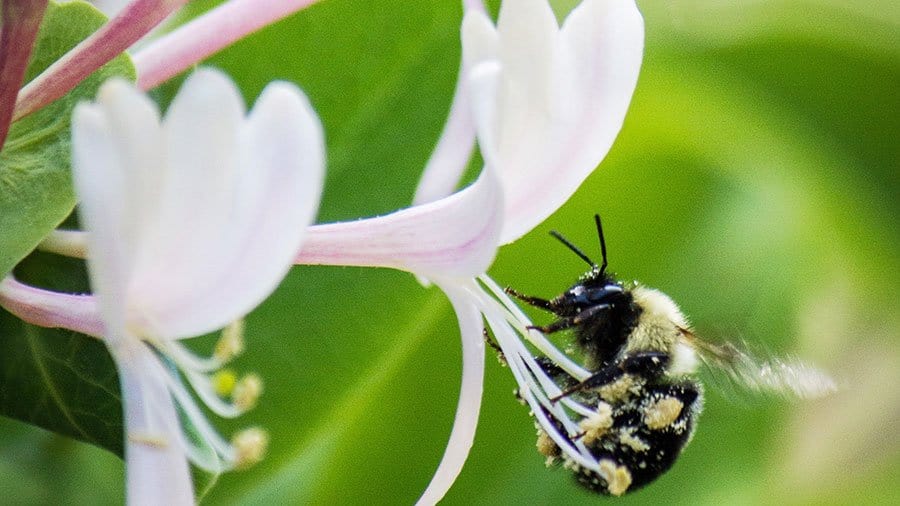
Warm, bright days burst open tree and shrub buds, and bring out flowers on many of the spring bulbs. And with the flowers have come clouds of pollinators — bees of several kinds, small and large wasps, various flies and even some butterflies. A lovely mourning cloak (Nymphalis antiopa) was seen floating through the garden, coming to land on the deck in a patch of morning sun.
All these nectar-seeking aerialists are important pollinators, moving pollen around and aiding in the production of fruits, vegetables and seeds. I really enjoy watching these creatures, possibly because I admire their industry. No one has ever seen a lazy bee. The dollar value of their activity is substantial. Their pollinating service to North America’s food industry is in excess of $4 billion dollars annually.
Watching a fat bumblebee hanging out of a small blue scilla flower, I can’t help but wonder why this big solitary bee is awake so early, before flowers of more appropriate sizes are available. Pollinators come in all sizes, and generally their arrival is keyed to readiness of flowers that will accommodate their girth and characteristics. But bumblebees seem to have so much enthusiasm, they’ll attempt to squeeze into any ridiculously small bloom, and suffer no embarrassment when the stem keels over and dumps them on the ground.
Last year, I had success in drawing pollinators to the garden with several plants, particularly with ‘Blue Fortune’ and ‘Blackadder’ anise hyssop (Agastache ‘Blue Fortune, Zone 6, and A. ‘Blackadder’, Zone 7), and Agastache rugosa ‘Golden Jubilee’ (Zone 7). ‘Blue Fortune’ was growing in the ground, and so far I can’t see any returning foliage from it this spring; I’ll keep watching. ‘Blackadder’ and ‘Golden Jubilee’ both overwintered in the garage and are growing rapidly in their containers.
This summer, I want to install a big patch of borage, with gorgeous sky-blue flowers touched with black and white centres. Borage is intoxicatingly attractive to honey bees, and they’ll hover over it from dawn to dusk. The plant is floppy and messy, so it deserves a corner of its own where it can lounge and not give offense to fastidious or prim neighbours. In the past, I’ve had a solitary plant, but the corner placement will allow for a sizable number of borage plants, and that’s important. Nectar-producing flowers clustered in clumps of at least four feet (120 cm) in diameter are more attractive to pollinators than scattered individual flowers. And, of course, it’s all about the flowers. A succession of flowering plants that lasts from spring through fall will support a range of bee and small wasp species.
Flowers of different shapes will increase diversity, attracting different sizes and species of pollinators. One of my favourite plants for this purpose is caraway, with broad, flat heads (called umbels) of tiny white flowers that attract small, iridescent green hover wasps, which have an ability to hang in the air like hummingbirds. The individual flowers are very small, and once pollinated, each evolves into a flavourful caraway seed. These homegrown caraway seeds are amazingly potent and wonderful in baking. Parsley (a biennial plant that flowers in its second season), fennel and Queen Anne’s lace also fall into this flower form category.
If I had a serious allergy to insect stings, I wouldn’t be doing this, but fortunately I’m without allergies, and also have never been stung (except by a yellow jack wasp, and they aren’t on my pollinator list). Pollinators are so dedicated to their task that it’s really hard to catch their attention. They don’t mind the camera, and the occasional gardener’s finger getting into their flower isn’t cause for resentment.
There are long lists of nectar-producing flowers for pollinators, and here are a few that would be pretty in a garden, as well as useful to pollinators. Early-blooming plants: chives, larkspur, California poppy, sweet alyssum. Mid-season plants: coneflower, foxglove, monarda, coreopsis. Late-blooming plants: cleome, salvia, scabiosa, zinnia.


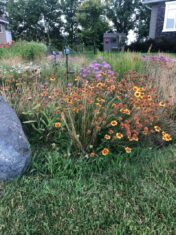
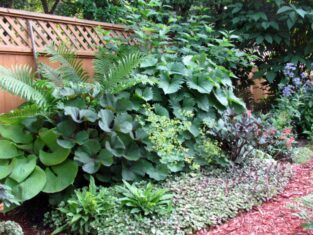
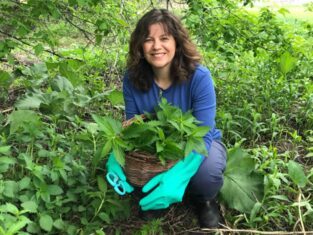
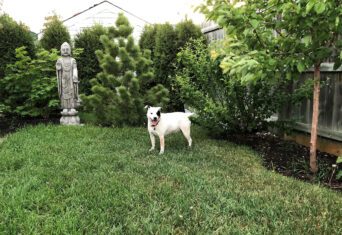
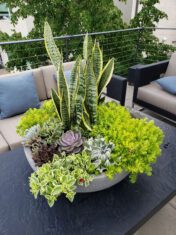
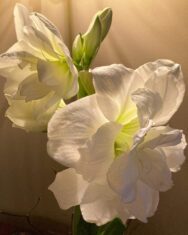

The flowers of plants that make use of biotic pollen vectors commonly have glands called nectaries that act as an incentive for animals to visit the flower. Some flowers have patterns, called nectar guides, that show pollinators where to look for nectar. Flowers also attract pollinators by scent and color. Still other flowers use mimicry to attract pollinators. Some species of orchids, for example, produce flowers resembling female bees in color, shape, and scent. Flowers are also specialized in shape and have an arrangement of the stamens that ensures that pollen grains are transferred to the bodies of the pollinator when it lands in search of its attractant (such as nectar, pollen, or a mate). In pursuing this attractant from many flowers of the same species, the pollinator transfers pollen to the stigmas –arranged with equally pointed precision — of all of the flowers it visits.
I have several dwarf fruit trees in full bloom right now. Normally there would be a whole assortment of bees buzzing around them. There is not a single bee of any kind. What could be going on?
Same thing here – the cherry tree is in full bloom and I’ve seen exactly one bumblebee – no other pollinators to be found. It’s worrying.
Hi Joe,
That’s worrying news. There could be several factors behind the absence of pollinators on your tree — weather conditions (least likely cause), local pesticide use, hive collapse and probably more I can’t think of. Honey bees seem to be the most vulnerable currently, due to the mysterious hive collapse syndrome. Try to monitor the trees in the morning hours, when nectar production in the flowers is highest (that’s when you should see the greater numbers of pollinators). The most pragmatic way to address the problem is to plant a pollinator garden, stocked with plants selected specifically to attract a broad variety of pollinators. Organic orchards often have these attractant gardens planted in long strips throughout the trees.
– judith
Joe,
Here is a good article from the New York Times about the problem of honey bee hive collapse disorder: paste this URL into your browser: http://nyti.ms/ZYgadQ
Study Finds No Single Cause of Honeybee Deaths
BY JOHN M. BRODER
Pesticides, parasites, poor nutrition and a lack of genetic diversity are blamed for a phenomenon known as colony collapse disorder.
— judith